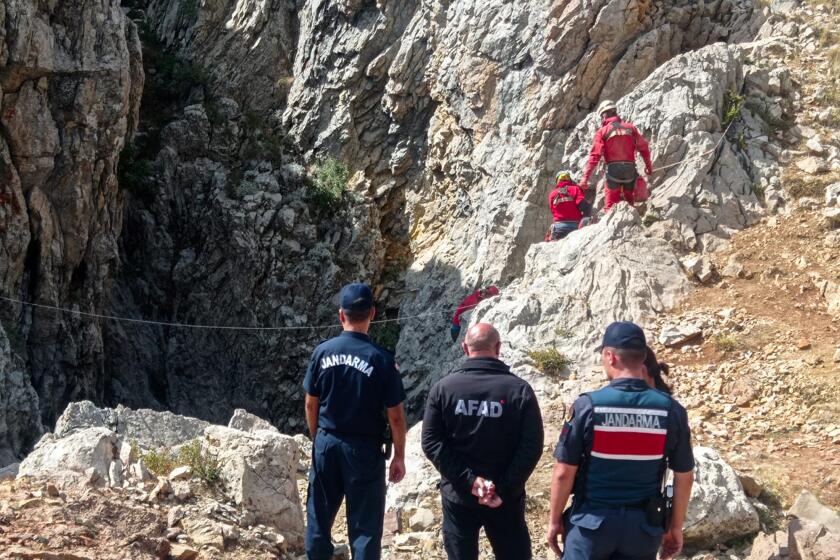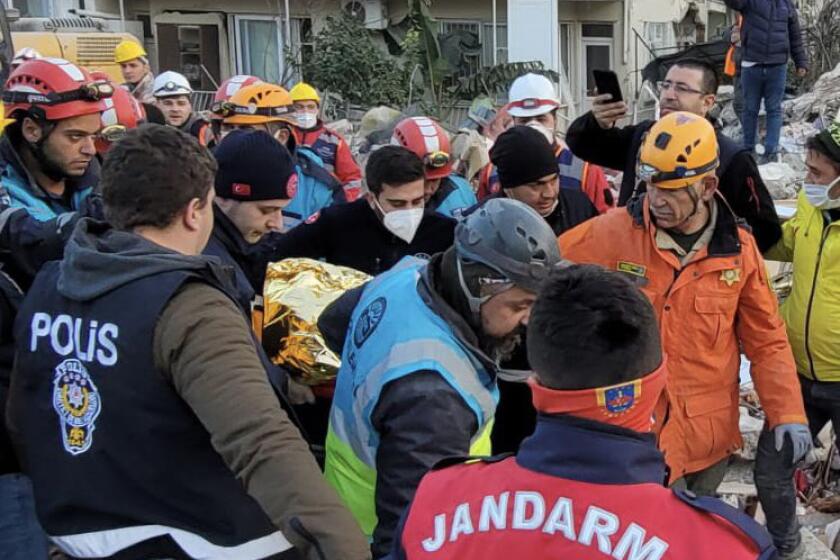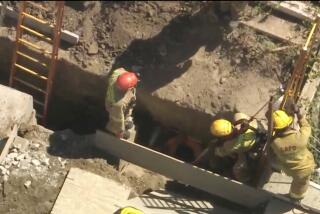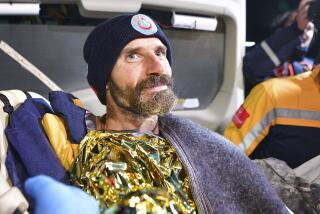American researcher rescued from deep Turkish cave in massive international operation
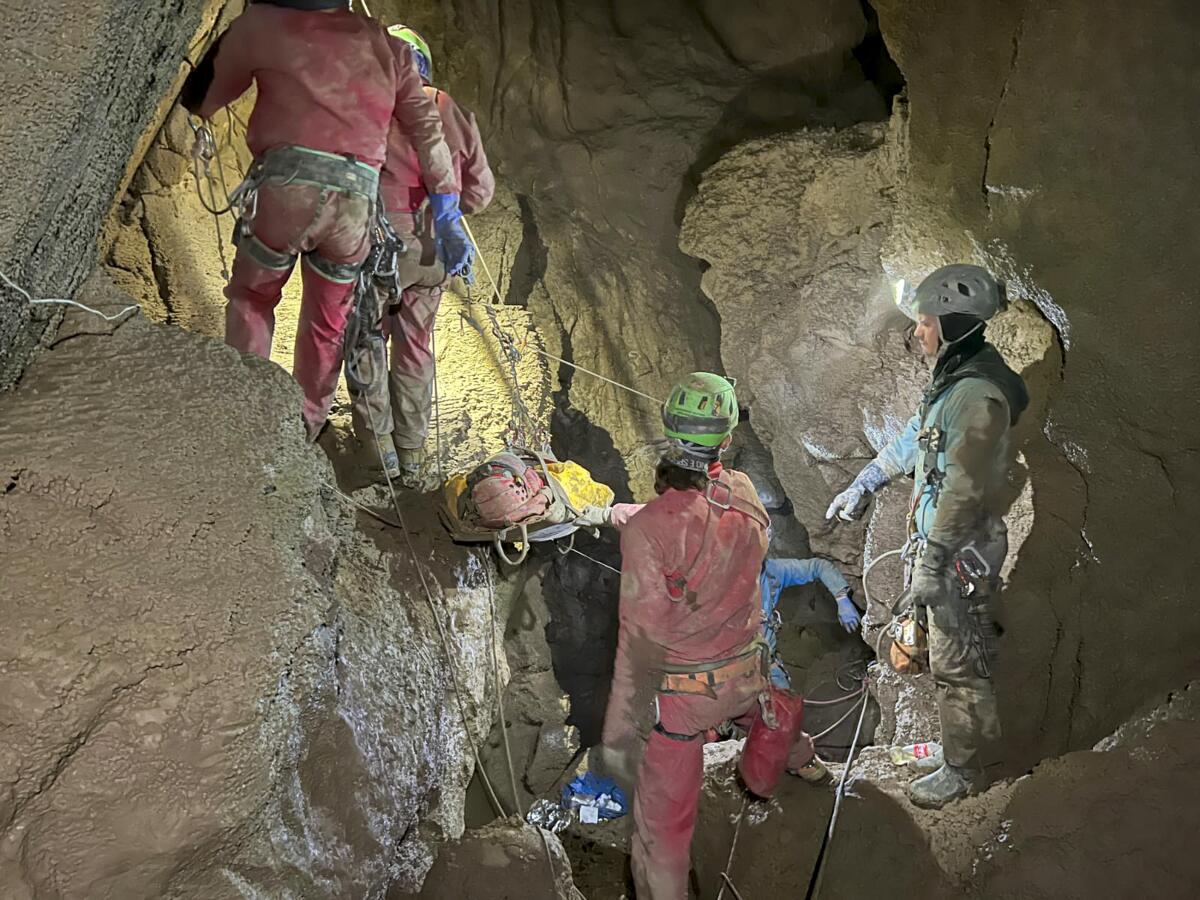
- Share via
TASELI PLATEAU, Turkey — Rescuers pulled an American researcher out of a Turkish cave on Monday, more than a week after he became seriously ill more than 3,000 feet below its entrance, said the Speleological Federation of Turkey.
Teams from across Europe had rushed to Morca cave in southern Turkey’s Taurus Mountains to aid Mark Dickey, a 40-year-old experienced caver who became seriously ill on Sept. 2 with stomach bleeding. He was on an expedition to map the cave, which is the country’s third deepest.
Dickey was too frail to climb out himself, so rescuers carried him with the help of a stretcher, making frequent stops at temporary camps set up along the way.
“Mark Dickey is out of the Morca cave,” the speleological federation said in a statement. It said that Dickey was removed from the last exit of the cave at 12:37 a.m. local time Tuesday.
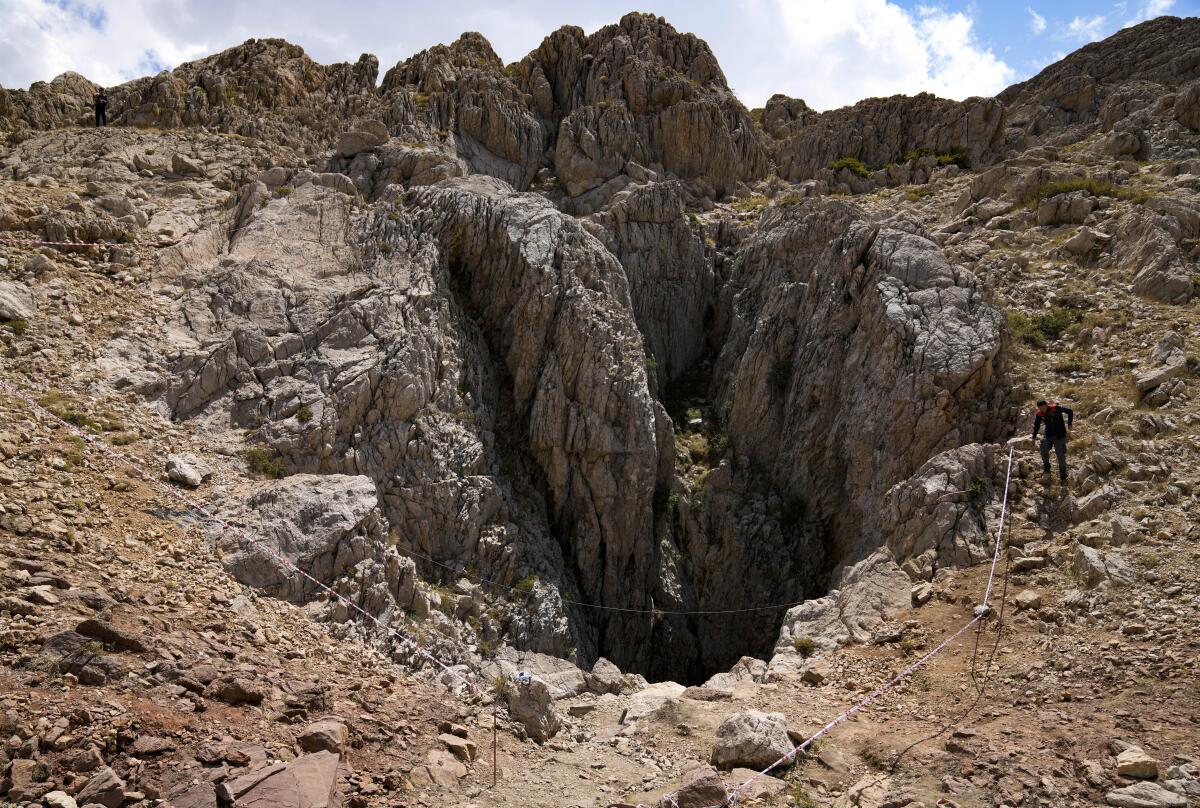
“He is fine and is being tended to by emergency medical workers in the encampment above,” the statement said.
Mark’s parents, Debbie and Andy Dickey, thanked the international caving community, doctors, rescuers and the Turkish government for helping to retrieve their son.
“The fact that our son, Mark Dickey, has been moved out of Morca Cave in stable condition is indescribably relieving and fills us with incredible joy,” they said in a statement.
The American was first treated inside the cave by a Hungarian doctor who went down into the cave on Sept. 3. Doctors and rescuers then took turns caring for him. The cause of Dickey’s illness was not clear.
Turkish and international cave rescue experts are working to save an American speleologist trapped more than 3,200 feet deep inside a cave in Turkey.
The biggest challenges for the rescuers were the steep vertical sections and navigating through mud and water at low temperatures in the horizontal sections. There was also the psychological toll of staying inside a dark, damp cave for extended periods of time.
About 190 experts from Bulgaria, Croatia, Hungary, Italy, Poland and Turkey took part in the rescue, including doctors, paramedics and experienced cavers. Teams made up of a doctor and three or four other rescuers took turns staying by Dickey’s side at all times.
The rescue began on Saturday after doctors, who administered IV fluids and blood, determined that Dickey could make the arduous ascent.
Before the evacuation could begin, rescuers first had to widen some of the cave’s narrow passages, install ropes to pull Dickey up vertical shafts on a stretcher and set up temporary camps along the way.
Dickey, who is from Croton-on-Hudson, N.Y., is a well-known cave researcher and a rescuer himself who had participated in many international expeditions.
American and Turkish search and rescue teams pull a teenage boy alive from a quake-damaged building in Hatay, Turkey.
He and several other people on the expedition were mapping the 4,186-foot-deep Morca cave system for the Anatolian Speleology Group Assn. Though Dickey became ill on Sept. 2, it took until the next morning to notify people above ground.
Turkish authorities made a video message available that showed Dickey standing and moving around on Thursday. While alert and talking, he said he was not “healed on the inside” and needed a lot of help to get out of the cave.
After Dickey’s rescue, the head of Turkey’s Disaster and Emergency Management Presidency, Okay Memis, told a news conference that the American’s health was “very good.”
The European Cave Rescue Assn. said Dickey would be transferred to a hospital following a medical assessment.
It said that many cave rescuers remained in the cave to remove equipment used during the operation.
The association expressed its “huge gratitude to the many cave rescuers from seven different countries who contributed to the success of this cave rescue operation.”
More to Read
Sign up for Essential California
The most important California stories and recommendations in your inbox every morning.
You may occasionally receive promotional content from the Los Angeles Times.
